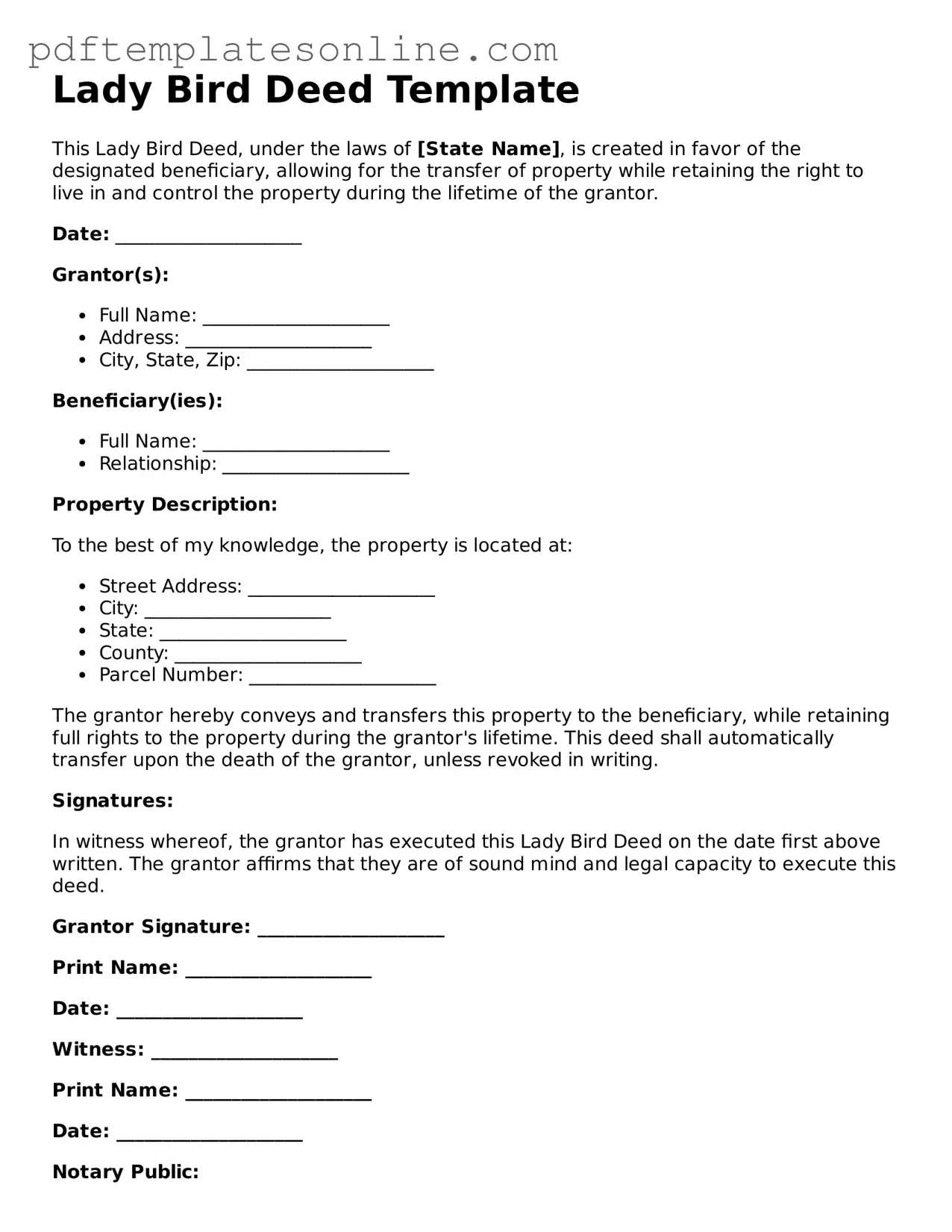When individuals prepare a Lady Bird Deed, they often encounter several common pitfalls that can lead to complications in the future. One frequent mistake is failing to provide accurate property descriptions. A precise legal description is essential for ensuring that the property is correctly identified. If the description is vague or incorrect, it may result in disputes or challenges to the deed’s validity.
Another common error involves not including all intended beneficiaries. People may assume that their heirs know they are included in the deed, but without explicit mention, this can lead to confusion or unintended exclusions. It is crucial to list all beneficiaries clearly to avoid potential conflicts after the grantor's passing.
Some individuals neglect to consider the implications of retaining a life estate. While a Lady Bird Deed allows for the grantor to retain control over the property during their lifetime, misunderstandings about this arrangement can lead to issues. For example, if the grantor sells the property without informing the beneficiaries, it can create legal complications.
Inadequate notarization is another mistake that can invalidate the deed. Many people forget that the Lady Bird Deed must be signed in the presence of a notary public. Without proper notarization, the document may not hold up in court, which defeats the purpose of the deed.
People also often overlook the importance of recording the deed with the appropriate local authority. Even if the deed is properly executed, failing to file it can mean that it is not legally recognized. Recording the deed ensures that it is part of the public record and protects the beneficiaries' interests.
Moreover, individuals sometimes do not account for tax implications. A Lady Bird Deed can have different tax consequences than a traditional transfer of property. Consulting with a tax professional can help clarify any potential liabilities or benefits associated with the deed.
Another mistake is misunderstanding the impact of Medicaid eligibility. While a Lady Bird Deed can help protect assets from Medicaid recovery, it is essential to understand how it interacts with Medicaid rules. Missteps in this area can lead to unintended financial consequences.
Finally, individuals may fail to update the deed after significant life changes. Events such as marriage, divorce, or the birth of a child can affect the intended distribution of property. Regularly reviewing and updating the deed ensures that it reflects the grantor’s current wishes and circumstances.
